Review for Utawarerumono: Volume 1 - Mask of a Stranger
Introduction
I have myself another ADV series to watch and review, and as so often happens, my thoughts turn once more to the demise of that once proud anime distributor and the reasons behind it. I think that one of the problems was that ADV was a company created by fans for fans, which seems a great idea in principle, but in practice, fans don't necessarily make the best businessmen. I ask you, would you blind buy a series called Utawarerumono? Doesn't exactly roll off the tongue now, does it? It's a hit and miss approach with anime, sometimes you get translated titles for shows that just zing, and grab the imagination. Shows like Ghost in the Shell, Burst Angel, and The Melancholy of Haruhi Suzumiya are more noticeable in the West than Kokaku Kidotai, Bakuretsu Tenshi, and Suzumiya Haruhi no Yuutsu. Then again, sometimes the original title is so iconic that no change is necessary, hence Akira, Tenchi Muyo, and Cowboy Bebop. But getting it wrong can hurt sales. I'm sure the clumsiness that is She, The Ultimate Weapon was ill advised, whereas the simpler Saikano would have been more memorable. Utawarerumono lies at the other extreme. It's more than a mouthful, and admittedly there is a lot of enjoyment listening to anime review podcasts, where panicked and sweaty reviewers try and get through the pronunciation without losing fillings from their teeth, but it certainly isn't memorable. Surely another title would have been better advised, although maybe not the translation, "The One Being Sung". The French title, The Song of Dreams is catchy enough…
In any case, it was far too late by the time Utawarerumono was released by ADV. In fact, it was practically the final series released in its entirety in the UK; everything else was left mid-run. With the now defunct ADV stock in a permanent clearance sale, and the title not exactly catching the imagination, you can guess that Utawarerumono discs are cheap on the ground in the UK. So why am I reviewing the Region 1 releases? The same logic applies, and even with the creaky exchange rate, I picked up the Utawarerumono discs, along with an artbox, for a little more than 12 pounds. Also worth noting is that this is one of those series that Funimation picked up after the ADV collapse. If like me you are going to import from Region 1, make sure that you go for the 6 ADV singles, and not the Funimation 4-disc collection, as the Funimation release dispenses with all the extra features.
Utawarerumono is a fantasy series set in a strange world. It's based on a PC game, but before you recoil in horror, it's one of those narrative adventure PC games that the Japanese are so fond of, barely interactive animated storybooks, with sex scenes. This anime ditches the sex to produce something a little more appropriate for a broader audience. This is indeed a strange world, populated with dog-eared people, strange animals, very real deities, oppressive governments, and on the verge of war. It's in this world that a masked stranger awakes. Hakuoro has no memory of his past, but a mask is affixed to his face, impossible to remove. He wakes in the village of Yamayura, healed and nursed back to health by a young girl named Eluluu, and is taken to heart by the kindly village people. But against all the adversities and challenges this harsh world throws against the people of Yamayura, this noble, enigmatic man becomes a beacon of hope, and a source of strength.
The first five episodes are presented on Volume 1
1. The Uninvited
A man wakes up in a hut, with no memory of who he is, or what has happened to him. But the one thing he can't avoid is the mask affixed to his face, a mask that cannot be removed. He was found, injured in the forest, and a young girl named Eluluu brought him back and with her grandmother Tuskuru's help, nursed him back to health. The man is surprised to see the oddness of these people, with dog-like ears and tails, pointedly different from his own appearance. Eluluu gives the man her late father's clothes, something that irks her shy sister Aruruu, and takes him to look around the village. It's just in time for Nuwangi to arrive to collect tribute, although when he tries collecting from Eluluu, the man intervenes. The arrival of the stranger in their midst also seems to have negative consequences as well, when the deity Mutikapa is angered, and the storm clouds gather.
2. Ruler of the Wild Forest
Mutikapa is a white tiger, the Guardian of the nearby forest, and for years a carefully tended shrine has kept the villagers safe. That shrine has now been desecrated, and Mutikapa is enraged. When the tiger attacks the village, it's the man who decides to stand up to it, opining that sacred deities are all well and good, but when they are eating your children, you need another deity. But fighting Mutikapa will be harder than they think; its fur makes it invulnerable. They can't keep calling the amnesiac masked man 'hey you' forever, so Tuskuru gives him her late son's name, Hakuoro. Meanwhile, Aruruu has run off into the forest, and found a cute little kitty cat with tiger stripes that she has named Mukkuru.
3. Violet and Amber
Hakuoro's settling in, and getting an understanding of the precarious life that the villagers lead. It's underlined when a group of deserters show up, escaping from the perils of war, looking for a peaceful life. Tuskuru welcomes them with open arms, confident in her belief that people should help each other. Hakuoro's helping the villagers by teaching them how to fertilise the barren fields around the village. Then that night, Eluluu raises the alarm, Tuskuru has been kidnapped! Hakuoro gives chase, only to find that Tuskuru pays house calls, and she's actually visiting a sick girl named Yuzuha and her over-protective brother Oboro, who has a reason to keep his presence near the village quiet.
4. One-Way Path
Yuzuha's illness is chronic, and left untreated will claim her life. There is a medicine that will prolong her life, but Tuskuru doesn't have a lot, and it is prohibitively expensive. Which is why Oboro is forced to commit a little midnight theft. But the consequences of his actions will be far reaching when the man he targets, Nuwangi's father Sasante, comes to Yamayura looking for the thief. An overzealous guard attacks Aruruu when she makes her displeasure felt, Tuskuru tries to protect her granddaughter, and disaster strikes. Oboro swears revenge and races off, only to be captured. Against all expectations, the villagers choose Hakuoro to lead them, and his first decision will either doom or protect the village.
5. Daughter of the Forest
Hakuoro's choice has put the villagers on an unalterable path, especially when Emperor Inkalla, Sasante's brother orders the eradication of the 'rebels' as an example. Soon defences are going up, and formerly peaceful farmers and villagers are being trained in how to fight. His life having been saved twice already by Hakuoro, Oboro brings his followers to swear loyalty to him. It may not be enough though, as when Hakuoro visits the other villages nearby to ask for allies, the soldiers have already struck, and Samurai General Benawi confronts him and Oboro. Meanwhile Mukkuru is growing up quickly, he's already as big as Mutikapa.
Picture
This being a Region 1 disc, Utawarerumono gets a 1.78:1 anamorphic transfer of the NTSC variety. It means a slightly lower resolution than PAL discs, and a greater prevalence of aliasing, but it also means that the image is clear, sharp, and colourful, and the animation is smooth, and free of ghosting and judder. Utawarerumono is an interesting animation, period fantasy as it is, it reminds me somewhat of Inuyasha, with its simplicity of character designs, and wholesome bright, primary colours. That said, there is something of a more atmospheric aesthetic to the animation, it's much more detailed and vivid, and with the fantasy setting, there's something Ghibli-esque about it, reminiscent of films like Nausicaa and Princess Mononoke. All in all, it's a very pleasant show to watch.
Sound
Utawarerumono comes in DD 5.1 English and DD 2.0 Japanese stereo, along with optional translated subtitles, and a signs only track. In a nice move, the episode titles get a subtitle translation, but in an unconventional font that very much suits the look of the show. The dialogue is clear in both versions, and the show gets some very earthy, folk style music, along with a couple of very pleasant theme songs. I was happy enough with the Japanese version, which had some memorable character voices. Not so much for the English dub, which is pretty run of the mill for anime, not exactly standing out, but not really all that awful either.
Extras
Utawarerumono gets the usual jacket picture and animated menu, and this being a Region 1 disc, it also autoplays with ads for Anime Network and the now dead Newtype USA magazine.
Inside the, very shiny green Amaray style case, you can partake of an eight page booklet that has interviews with series planner, Makoto Uezu, Japanese voices of Oboro and Yuzuha, Daisuke Kirii and Mai Nakahara, and the English voice of Hakuoro, John Gremillion. The booklet is also very green.
On the disc you can find a seven-page glossary, explaining the terms used in the show, and detailing some of the characters that you'll encounter.
The Omake Theater is a 7-minute comedy short set in the Utawarerumono universe. Why is it that all of these anime shorts invariably involve the main characters having a toilet emergency? They did it in Naruto; they do it here as well. It's still pretty funny though.
The Extended Episode Previews are just that, and there are 2½ minutes worth here for all five episodes. These previews and the Omake Theater are both Japanese only.
There is a 30 second Character Art Gallery slideshow.
The disc is rounded off with trailers for Moeyo Ken TV, Guyver, Yumina, E's Otherwise, Get Backers, and Nerima Daikon Brothers.
Conclusion
I'm glad this series is called Utawarerumono. For one thing, after a while it becomes fun to type (seriously, try it for a while, Utawarerumono. I haven't assigned it to an F-key, honest). The other thing is that with a name like that, not a lot of people are going to be interested in it. And one of the things about niches within niches, cult entertainment, and those fun little movements that gather small but devoted followings, is exclusivity. Utawarerumono is going to be my little secret, my little pleasure, the enjoyment of which I can share with a select few, rather than have it dominate the anime mainstream, and have its nuances and quirks drowned out by an overwhelming chorus of unrepressed fandom. Do you want to be one of the minions adding to the white noise on a Naruto forum, or do you want to be a member of a small group, keeping a thread of enthusiasm bubbling over, in a peaceful corner of the Internet?
As you may have surmised, I liked Utawarerumono. It's a quirky, unconventional yet charmingly old-fashioned fantasy tale. It somehow manages to be original and clichéd at the same time. It's the sort of anime that you feel that you have seen countless times before, yet constantly throws in something utterly unexpected and different, just to keep you on your toes. It helps that I haven't exactly delved into this particular genre, preferring sci-fi to fantasy, cyberpunk to rural naturalism, and futuristic anime to period pieces. Utawarerumono is very much a period piece, a mediaeval and feudalistic tale, steeped in fantasy and magical imagery, and with a strong theme of one's place in nature and the big scheme of things at its heart.
The story is a tried and trusted one, that of an outsider coming to a new world, and having a profound effect on it due to his different perspective. Hakuoro is the mysterious stranger, an amnesiac with a dark and hidden past, initially mistrusted by those who find him, but soon taken to heart and even venerated for his nobility and wisdom. He is an outsider in more ways than one, there is the mask that he cannot remove, and unlike everyone else in this world, he's human. The other people all display canine attributes, ears, tail, even sense of smell. But there is also a degree of familiarity to him, made clear when Tuskuru names him after her dead son, and indeed Eluluu and Aruruu do see a resemblance to their father in his appearance.
Yamayura village is in the middle of no mans' land in this feudal world. Those who look for a simple, peaceful, agrarian life populate it, but all around them they are surrounded by war and mayhem. The land that they have found is hard to work, and they themselves are fearful and superstitious, reliant on their leaders to guide them. It's also Yamayura that is the first port of call for those fleeing the wars, and Tuskuru is quick to welcome them, but it certainly is no sanctuary, with the people subject to taxation for the war effort, and prone to suffer the whims of those more powerful. Hakuoro's honour and sensible nature obviously mark him as a leader figure, but no more so than his straight-talking nature, and willingness to do what is right ahead of what is convenient.
But it's that which gets the village of Yamayura into significant trouble in this volume. Dealing with the Guardian of the Forest, Mutikapa by stopping the tiger from attacking rather than accepting its wrathful nature, may seem sensible and the smart thing to do, but the sense of pride and strength of purpose that instils in the villagers isn't the wisest thing in a world where you are supposed to keep your head down, and accept what your superiors dish out to you. The villagers choose the worst time to stand up to the soldiers and disaster strikes. It can all be seen developing from Hakuoro's arrival in the village, and so it is that he has a choice between restoring the status quo, and leading the villagers onward on the path to self-determination. Neither choice is attractive, and both will result in bloodshed, but he chooses the path that leaves the most blood on his own hands. Even while the villagers are proud to have him lead them, already the guilt is weighing him down.
Hakuoro is a deep and complex, and exceedingly interesting character, especially for an amnesiac, but that's where Utawarerumono excels. All the characters, no matter how ridiculous, or caricatured they appear, have more than a little depth to them, enough to hold the interest, and certainly enough to make you want to find out more. Tuskuru's brief appearance in the story is enough to get the wheels rolling, and establish the ground rules of the world, but it's her granddaughters Eluluu and Aruruu who form the strongest attachment to Hakuoro. Aruruu, after some initial reluctance and shyness, soon 'adopts' Hakuoro as a father figure, but Eluluu, who nursed him back to health has a more complex attachment to him. Teoro is a big brother figure, a strong oak to back Hakuoro up, but who always sees the bright side of things, although we don't see enough of his wife Sopoku to yet develop an opinion. She does seem to be the only one capable of keeping Teoro in line though.
More interesting are the characters outside the village, particularly the thief Oboro, and his ailing sister Yuzuha. Oboro has excessive pride and recklessness, and is prone to fight first and ask questions later. He certainly bears some responsibility for the way the story turns. Nuwangi is a typical toady, drunk with assumed power, and happy to bully the weaker parts of society. Yet he and Eluluu were children together, and grew up together. Even though they grew apart, seeing her dote on Hakuoro no doubt adds to the malice with which he acts. Yet among the antagonists there is the general Benawi, who is about as honourable a soul as you are likely to meet. It's apparent early on that he and his right hand man Kurou are fighting for the wrong side, and it will be fascinating to see how his arc develops.
Utawarerumono is a curious blend of a show. Its animation is bright and shiny, yet the story ventures into quite dark territory. It can be dramatic, and with its battle sequences and tiger attacks it can be pretty bloodthirsty and violent too, then at the drop of a hat it delivers an unexpected dose of comedy. It also has a childish simplicity to the way the story seems to unfold, then it suddenly explores some surprisingly complex themes, and shows hidden and nuanced depths to previously straightforward characters. The thing is that it all works as a whole. Utawarerumono is downright compelling. I can't wait to watch volume 2 and see what happens next. It's a good thing that I bought the whole series in one go…
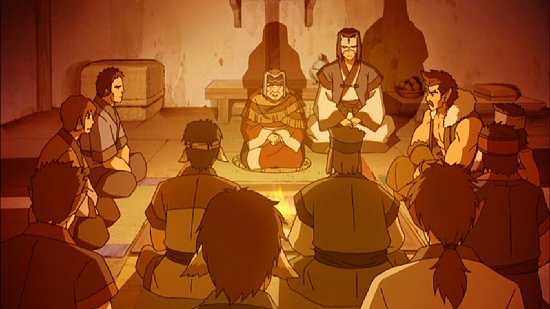
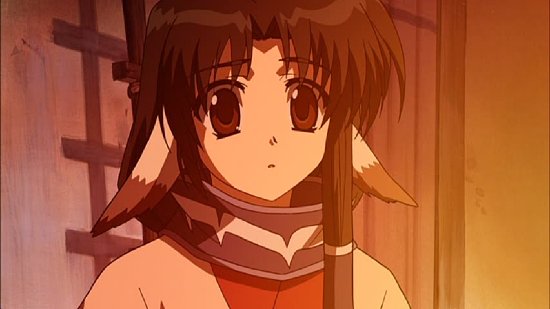
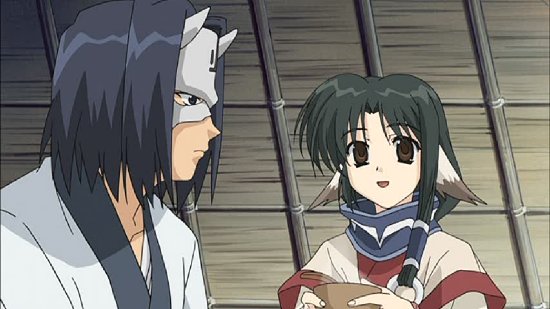
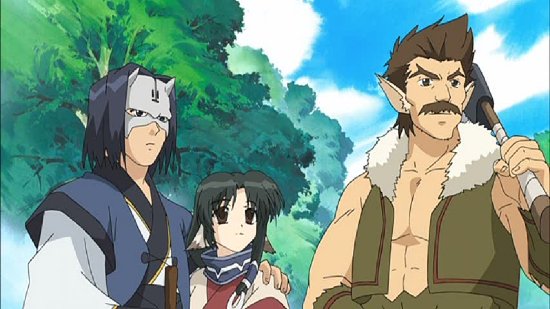
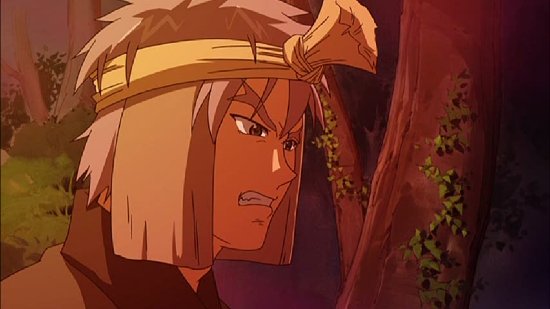
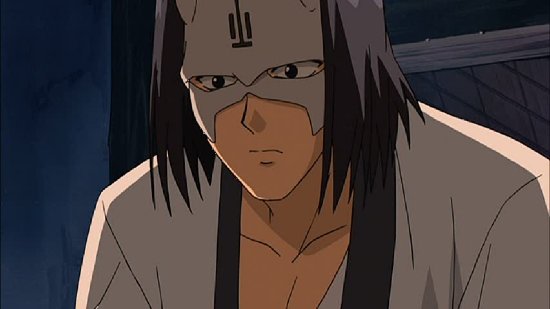

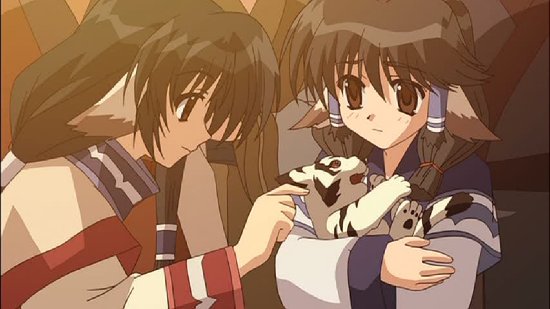
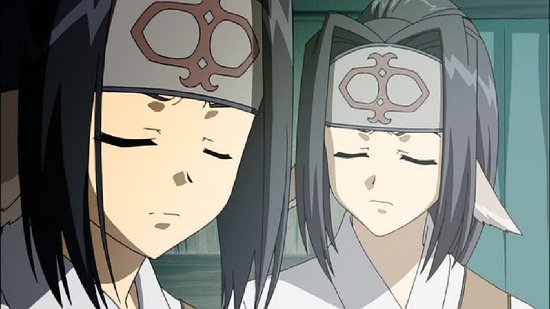
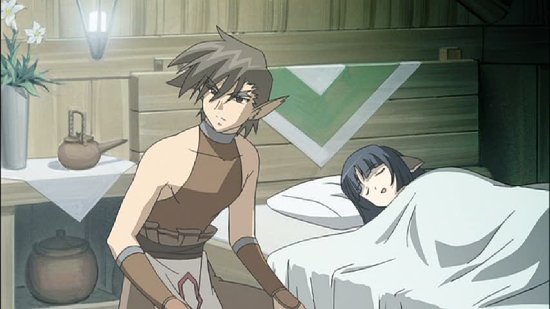
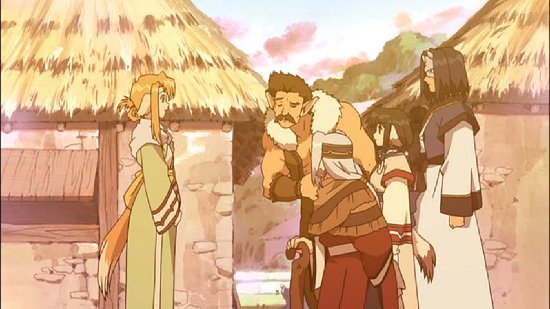


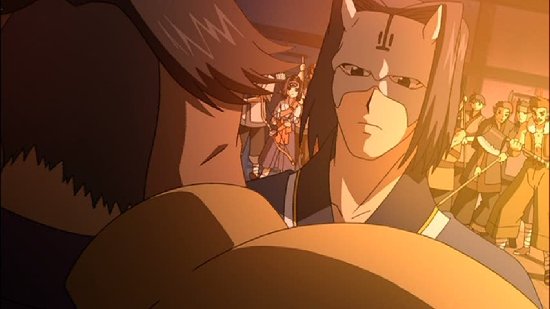
Your Opinions and Comments
Be the first to post a comment!